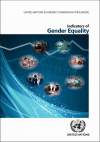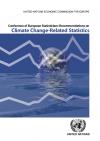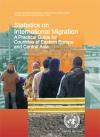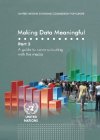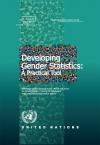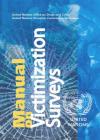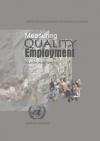Publications
Displaying Results 41 - 60 of 122
- English
Statistics and indicators that reflect the realities of the lives of women and men are needed to describe women’s and men’s role in the society, economy and family, to formulate and monitor policies and plans, monitor changes, and inform the public. In 2010, the Conference of European Statisticians (CES) established the Task Force on Indicators of Gender Equality, to improve the monitoring of
- English
These first ever Recommendations on Climate Change-Related Statistics are aimed at improving existing official statistics to support climate change analysis and reporting on greenhouse gas emissions under the Kyoto Protocol. The focus is not on scientific or meteorological data describing changes in weather and climate, but rather on statistics that are relevant for analysing climate change,
- English
Metadata are data that define or describe other data. Metadata are essential for interpreting data and making meaningful comparisons over time and between countries. This is particularly so for reporting on Millennium Development Goal (MDG) indicators, which often have multiple data sources and typically attract a wide audience of users who may have limited background in
- English
The objectives of these Guidelines are to (a) help statisticians and policymakers understand the importance of time-use surveys, (b) provide guidance in the design and implementation of time-use surveys, and (c) improve the international comparability of their results. The Guidelines include recommendations of preferred or best practice, based on the experience of member countries
- English
The last two decades have seen a proliferation of methods and indicators to measure sustainable development. Many countries and organizations have adopted sustainable development indicator sets to track progress towards a sustainable society. However, the differences between the approaches remain large. Therefore, the Conference of European Statisticians set up in 2009 a joint UNECE/Eurostat/
- English
This publication reviews the practices followed by countries in the UNECE region (covering Europe, Central Asia and North America) during the 2010 round of population and housing censuses. The aim is to compare the different approaches and practices adopted by the countries and to assess the compliance with the Conference of European Statisticians (CES) Recommendations developed for
- English
This document contains a set of questions on health state, to enable the production of internationally comparable measurements for this topic. It reflects the work of the Budapest Initiative Task Force, composed of experts from many countries and international organizations. The Budapest Initiative recommends the inclusion of these questions in health interview surveys, organised at the
- English
The 2006 High-level Dialogue on International Migration and Development at the United Nations General Assembly concluded that international migration could play an important role in national development, provided that it was supported by the right set of strategies and policies. This has led to the increase in international efforts related to migration and its measurement. Responding to the
- English
In recent decades, families, households and living arrangements have gone through major changes in Europe and North America. In particular, the patterns of family formation, dissolution and reconstitution have become more heterogeneous and family boundaries more ambiguous.This publication presents a framework and a set of concepts and indicators for the measurement of new forms of families,
- English
Migration is a powerful driver and important consequence of economic, political and social change. Because of its great impact on societies, migration needs to be adequately measured and understood. Reliable statistical data is the key to the basic understanding of this important phenomenon. Yet, in many countries, even the most general statistics on migration are incomplete, out-of-date or do
- English
Making Data Meaningful Part 3 - A guide to communicating with the media. Available in English (475 KB).
- English
Data on emigration tend to be far less reliable than data on immigration, because of the difficulty to record departures. How could this problem be overcome?This publication explores the possibility of using immigration data in receiving countries to improve emigration data in sending countries. Guidelines are provided to the countries interested in applying this approach to improve their
- English
- Pусский
- Pусский
Разработка гендерной статистики: практическое пособие (8.5 Mb) (2011)Гендерная статистика представляет собой направление, связанное со всеми другими традиционными областями статистики, и включает определение, производство и распространение статистических данных о положении мужчин и женщин в обществе, а также вопросы политики, касающиеся гендерного равенства. Такая информация очень
- English
This manual has been developed as part of the UNECE and World Bank Institute project on engendering national statistical systems. It was prepared by the UNECE Task Force on Gender Statistics Training for Statisticians with contributions from various experts. The manual was endorsed by the Conference of European Statisticians in June 2010. Print copies in English and Russian are
- English
Victimization surveys are a recognized tool that help governments and citizens understand their crime problems and how to address them better.This publication provides a comprehensive source of information for developing a national victimization survey. It is the first attempt to develop international methodological guidelines for the design of victimization surveys. Key issues are
- English
What is quality of employment? What indicators should be used to assess it? These questions are not easy to answer objectively. Our interpretation depends largely on our experience and participation in the labour market.This publication presents a concept paper and 9 country pilot reports (Canada, Finland, France, Germany, Israel, Italy, Mexico, Moldova and Ukraine). They are primarily


